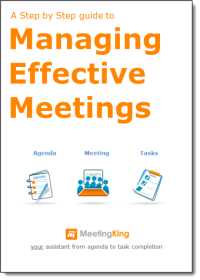Many employees and appraisers dread performance review meetings. They create paperwork and administration that has to be carried out on both sides. Also, for the appraiser, such meetings usually require the passing on of constructive feedback to employees, which can be difficult.
Good performance review meetings however, can be very motivating and help a person and organization move forward and build a better bond.
Here are some tips to make performance review meetings more effective and run more smoothly:
- Make it a natural conversation, it is not about completing forms. Documentation is necessary to properly prepare and follow-up, but the essence of the meeting is having a good one-on-one conversation about work and goals.
- Review throughout the review period – keeping good notes on employee progress means that the whole review period can be properly assessed during the performance review. What often happens otherwise is that the review is skewed to the employee’s last couple of months and incidents that stick out in the appraiser’s mind. Keeping notes on a frequent basis prevents this happening. You may also consider increasing the frequency of your reviews. Quarterly review meetings are much more effective than annual review meetings and often feel less “artificial”. Having a shorter time frame to monitor progress (on both sides) is also much more motivating.
- Use the “feedback sandwich” – to give constructive feedback, the feedback sandwich is a useful tool that can be adopted. The way this works is to give positive feedback first and last, and sandwich the constructive feedback in the middle. For example, you might say something like: “You did really well with the organizing and planning of that project, well done!” and then listen to what the employee has to say. Then you could say something like, “Of course all plans we make have to change sometimes to match new situations that arise… how do you think you handled X change”?” The employee will respond and you can provide your observations as well. Then, to finish up, you can say something like “Overall though, the project met its objectives and you should be proud of your involvement with it”.
- SMART objectives – when setting objectives, these should be SMART: Specific, Measurable, Achievable, Realistic and with a Time frame. When objectives are SMART it is much easier (and fairer) to quantify whether an employee has achieved the objective or not.
- Do not discriminate – managers often have favorites, those people that they enjoy working with more and get along with better. That does not mean that the other employees did not do an excellent job. Nor does it mean that the “favorites” did a great job. Each employee should be reviewed on his or her own merits and performance throughout the review period. Of course, it should go without saying that discriminating on the basis of race, gender, age, sexuality, ethnicity and others is illegal and should not occur.
- Create a personal development plan – work with the employee on a Personal Development Plan. This should consider not just development areas specific to the job, but also areas that the employee wishes to develop in, which may lead to him or her being a more rounded employee in the workplace. This will help to make the employee more motivated for the upcoming review period, if they think their development needs are being addressed properly.
MeetingKing makes having performance reviews much easier. It reduces the paperwork involved and ensures that everything is stored safely online. This means the information can be easily found and referred back to when needed.
To get started you simply load the sample performance review template. You can use it as is, or modify it to meet your specific needs. During the meeting you can easily make notes and assign tasks for both the employee and the manager. With its built-in task manager, MeetingKing will help you make sure these tasks get done – MeetingKing will send reminders, the tasks are in the task list and for your next review meeting, MeetingKing will even add the tasks automatically to the agenda.
Both the employee and the manager can add comments to notes and tasks and the review can easily be shared with the human resources department and department manager by adding them to the CC list.
Regular personnel performance review meetings will help a person and organization to focus on long term improvements. Seeing progress is the best motivator for anyone.


